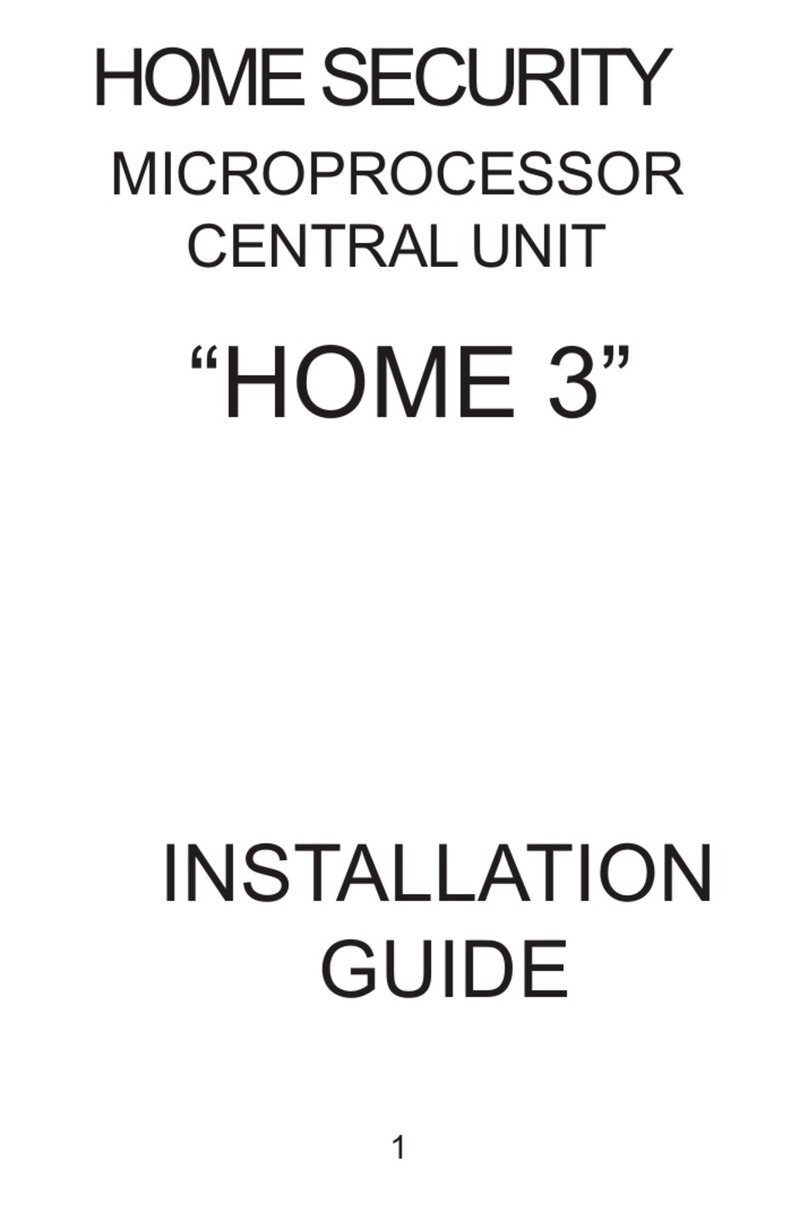4
supply, can be connected to each zone.
The sensor must provide at least 0.6sec.,
opened status of the connectors in sabotage
state.
Total power consumption of all sensors
using system power must be less than 200mA.
Zones between 1 and 6 can be set: double-
balanced ones, balanced without resistor at the
end of the line, with resistor only at the line (cir-
cuit) end and without balanced resistors
based on the fact that in zone 6 tamper con-
tacts are connected.
Zone 7 can be connected to one of the key-
boards, as unbalanced zone.
Zone 8 is connected to the tamper keyboard
buttons.
If the system is programmed, to be used by
key-switch for arming and disarming, the key-
switch is connected in zone 5 by resistor 1K.
The free (out of use) zones are connected
to the Ground (GND) by resistor 1 K.
3. Programmable outputs:
The system has two outputs for controlling
external devices: PGM1 and PGM2.





























